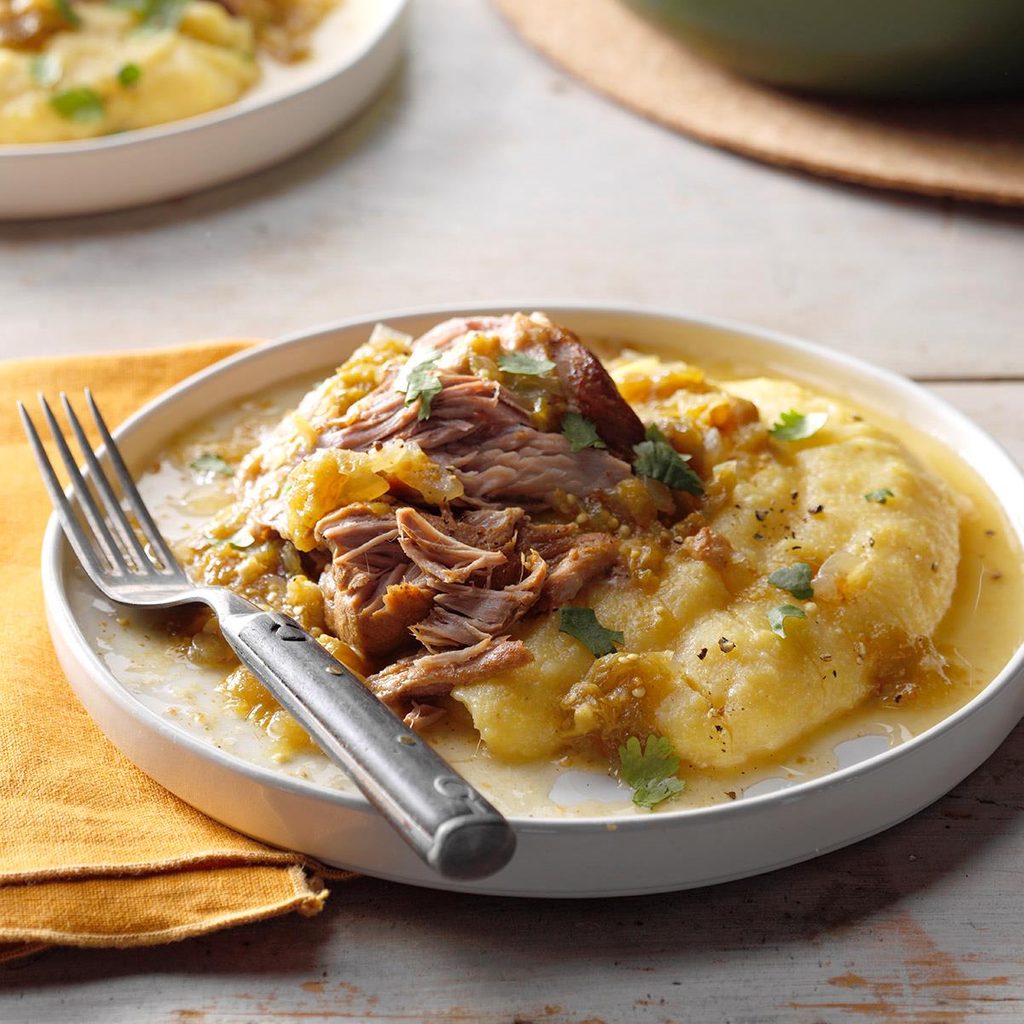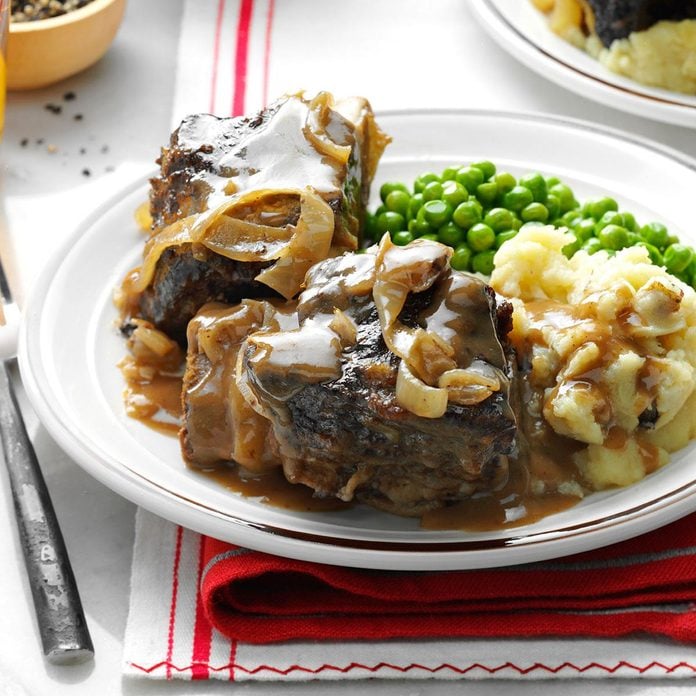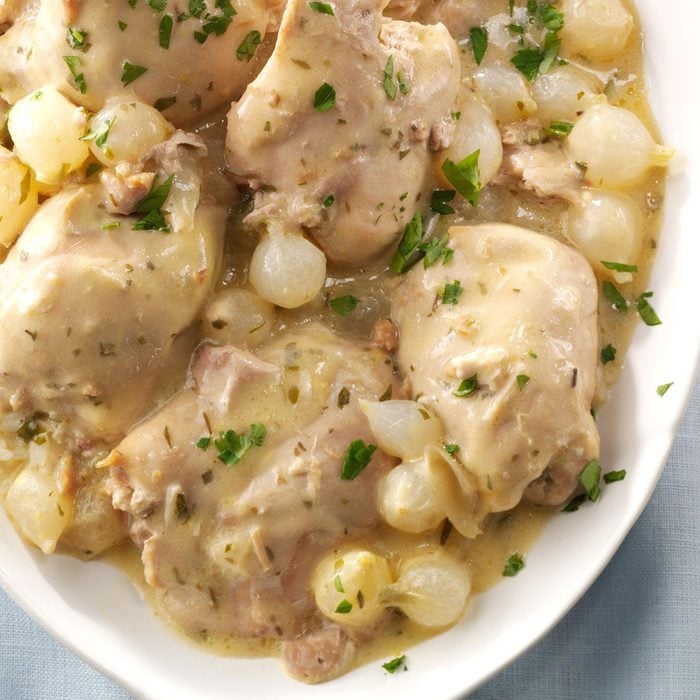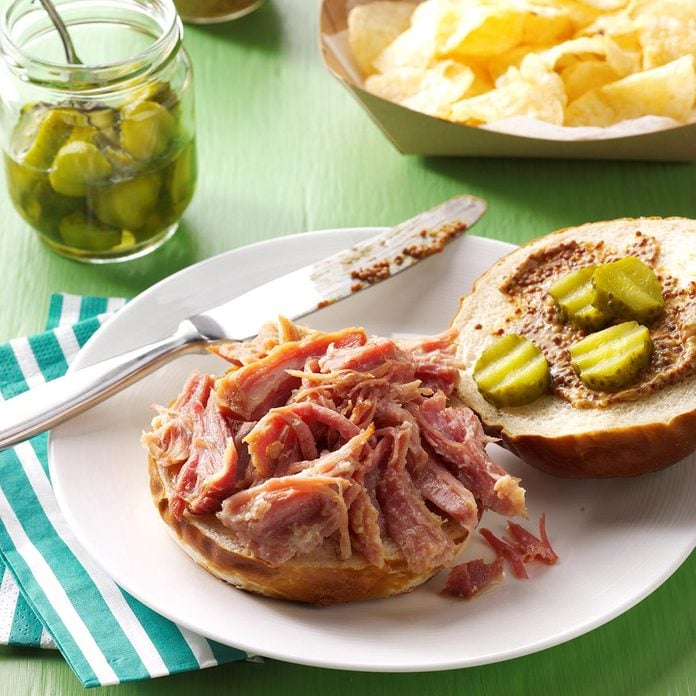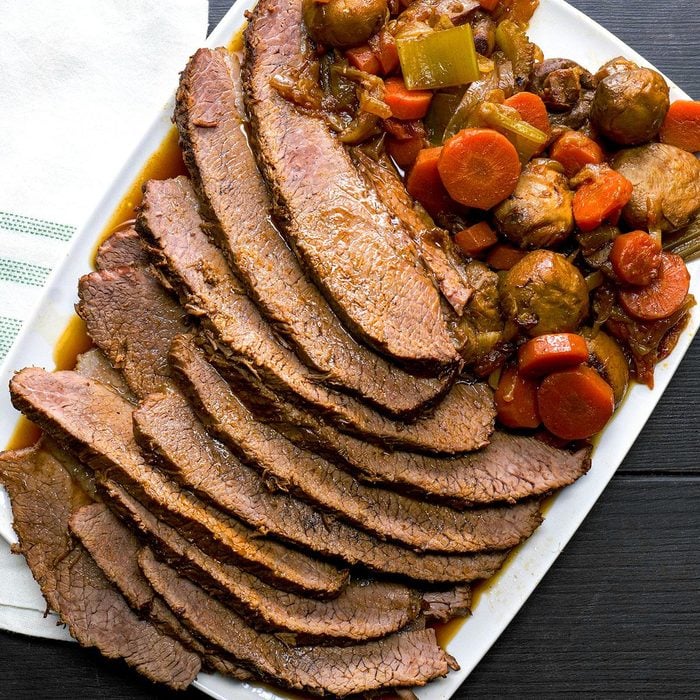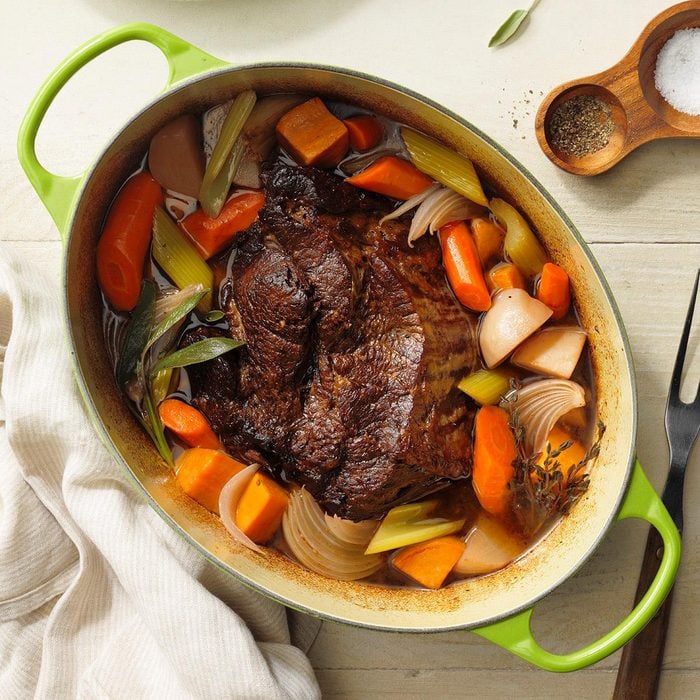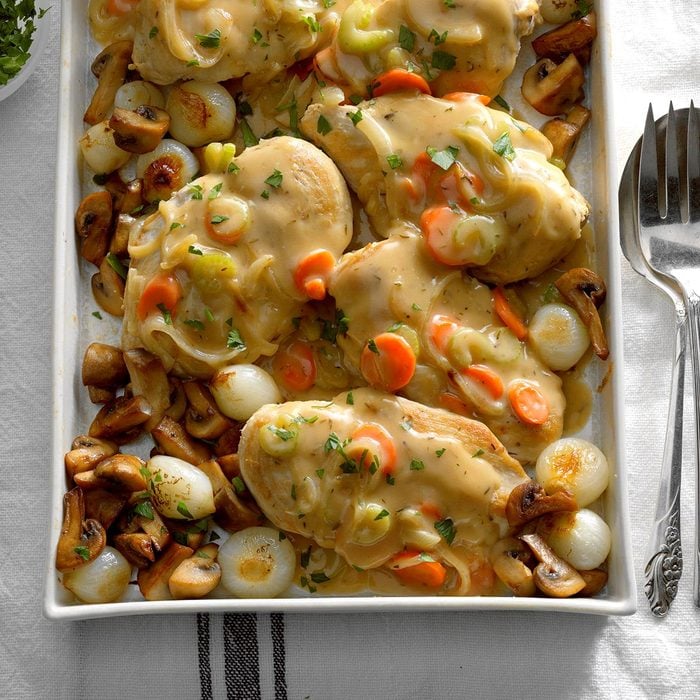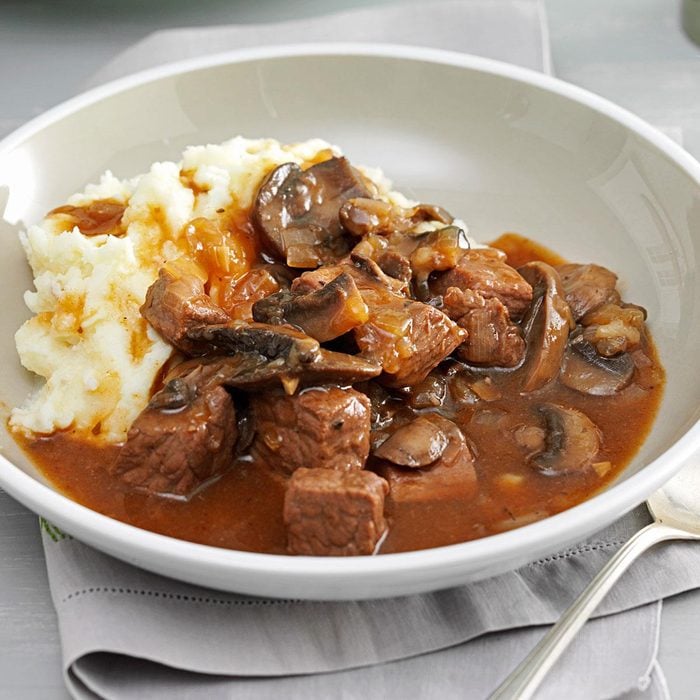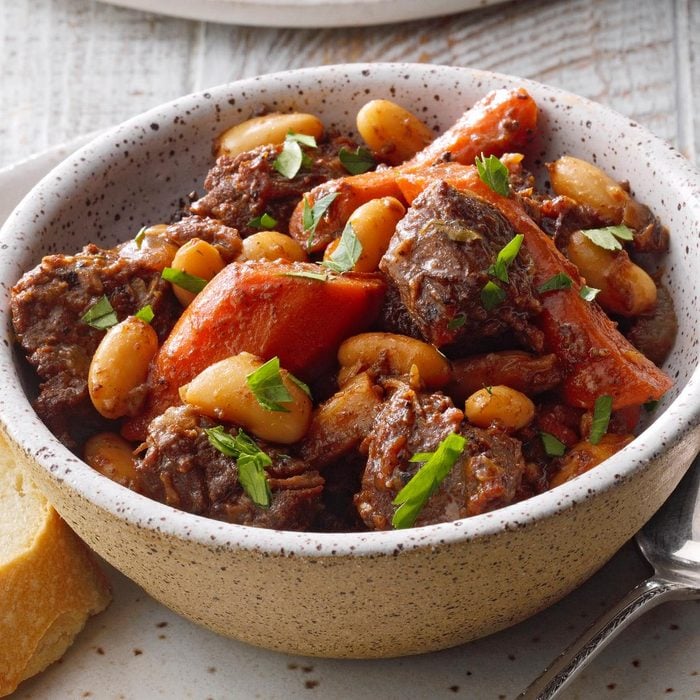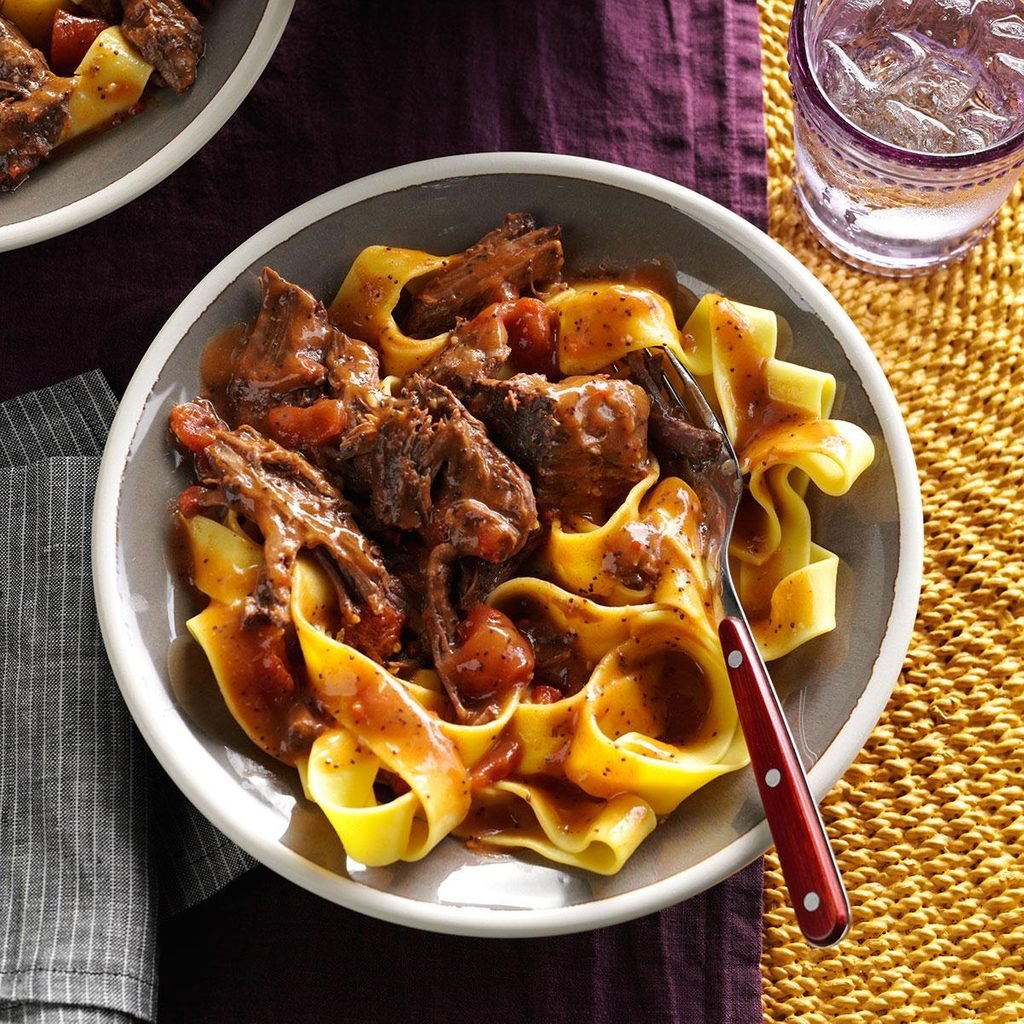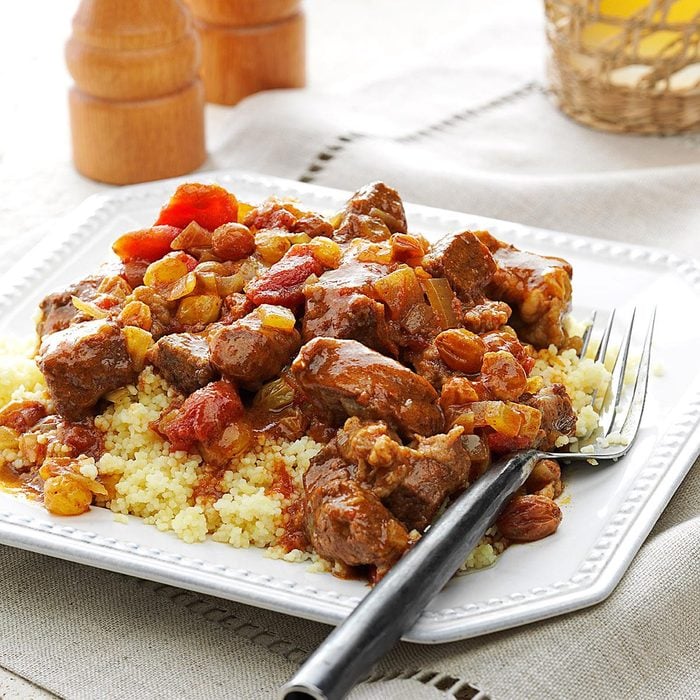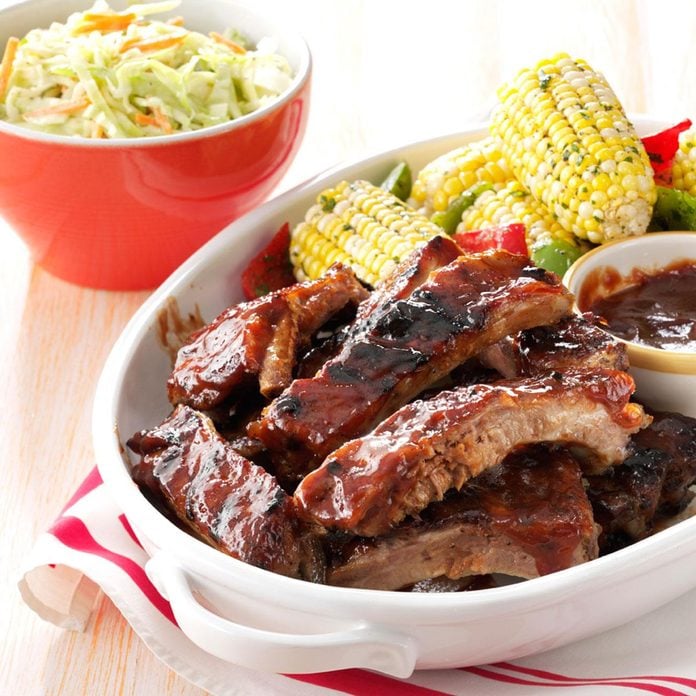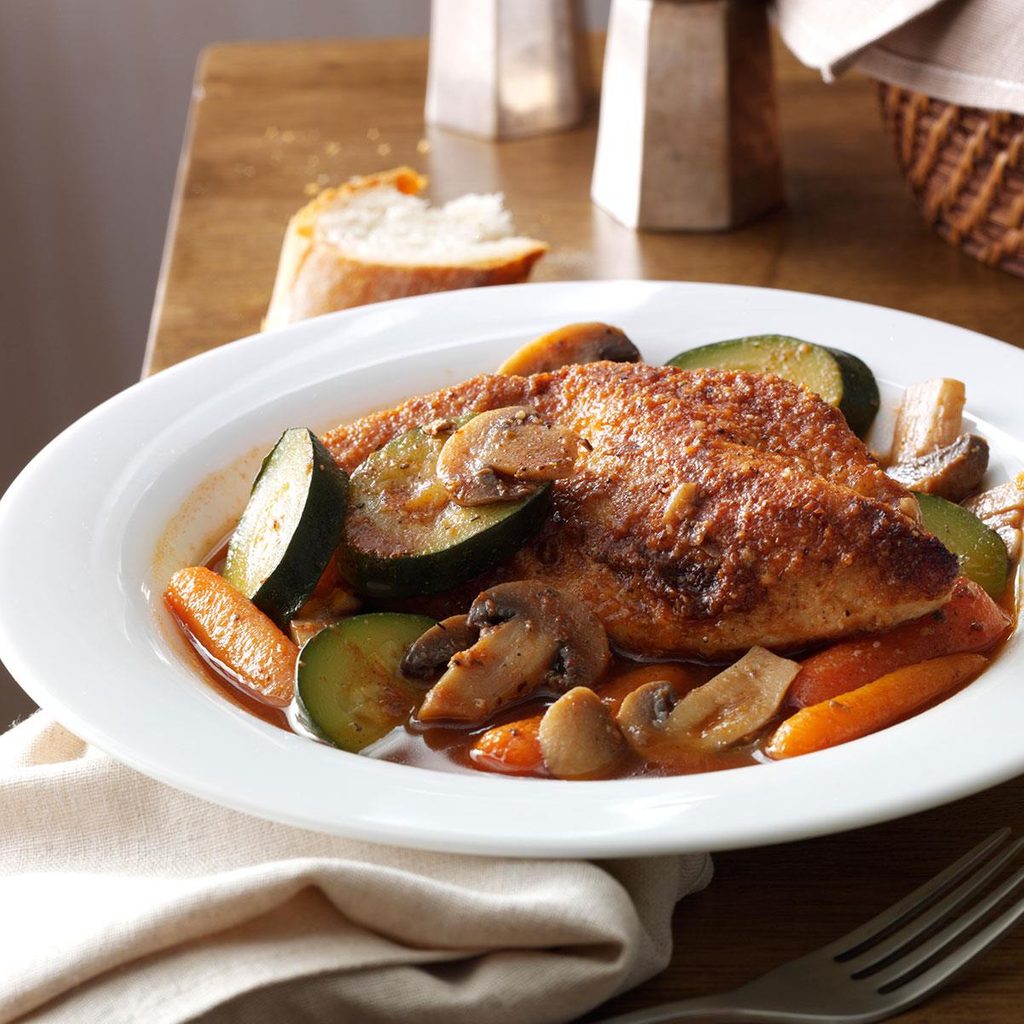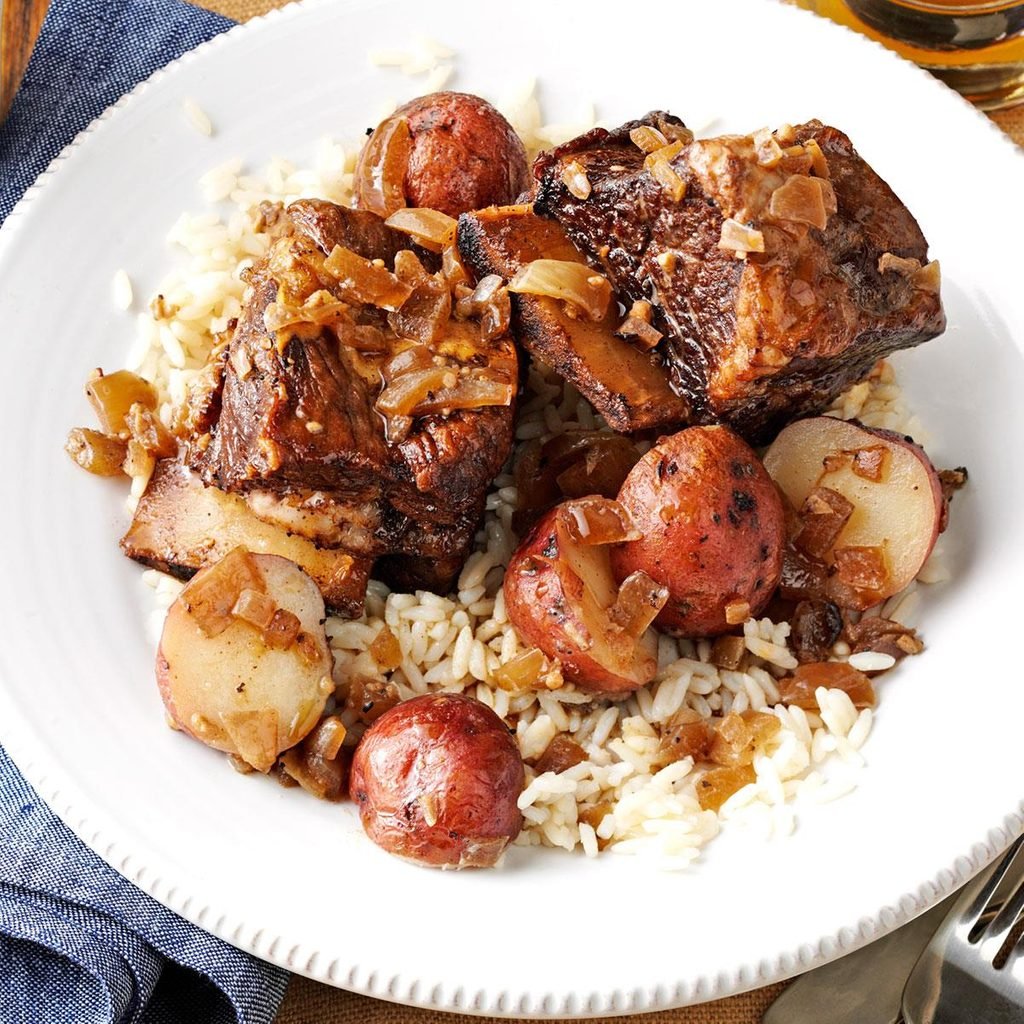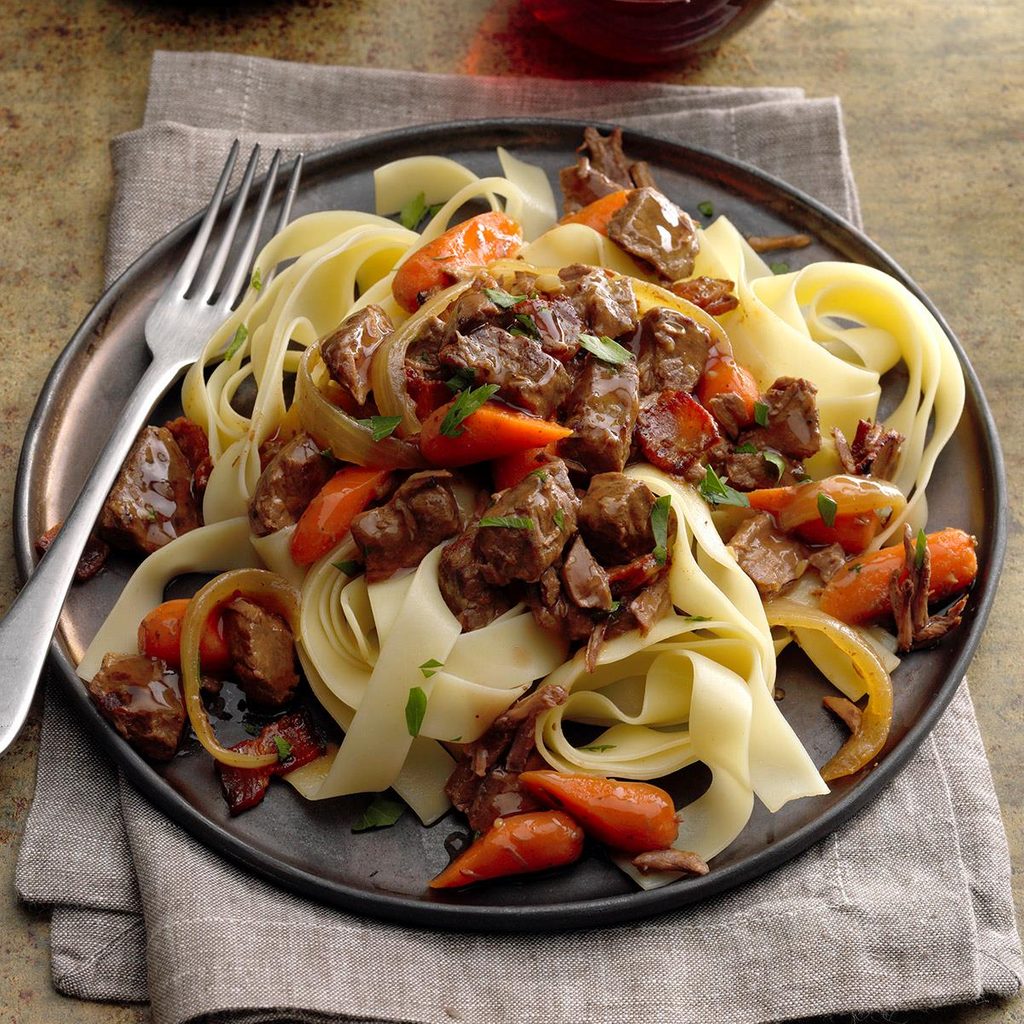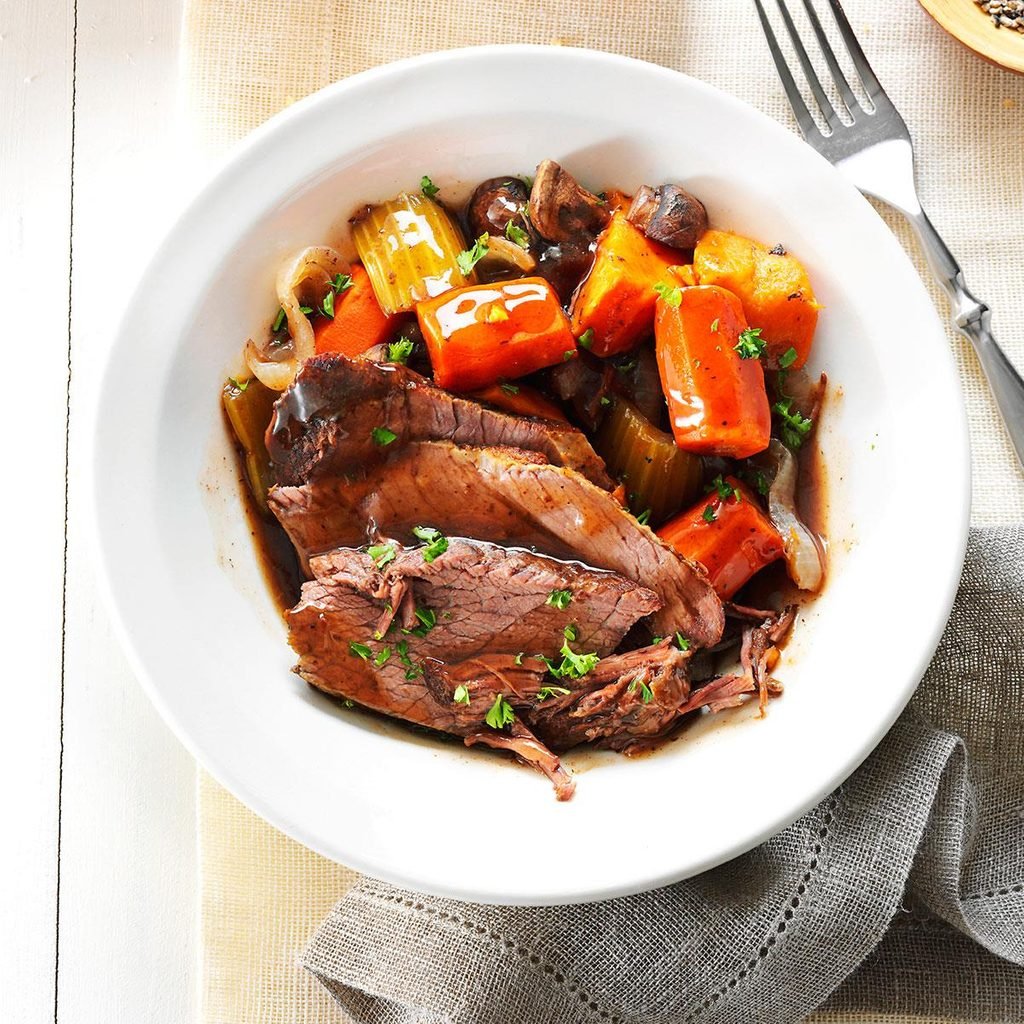Braising meat is so much easier than you think. It's a completely hands-off cooking technique that turns meat into tender, melt-in-your-mouth bites.
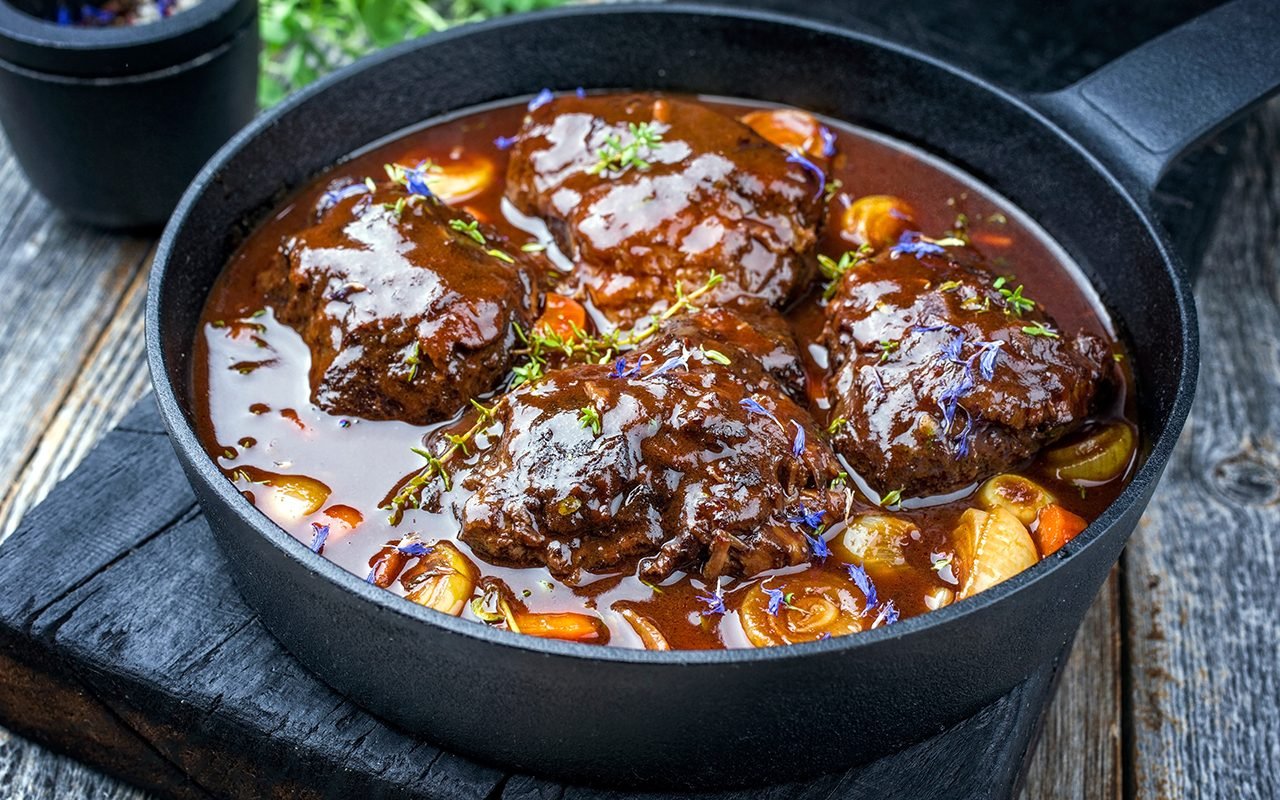
How to Braise Meat So It’s Tender and Juicy

If you’re looking for a rich, filling comfort meal that requires very little intervention, braising meat is the way to go. You basically throw everything into a Dutch oven and the meal prepares itself!
Bonus: this cooking technique magically transforms tough cuts of meat into tender bites, making it an inexpensive way to feed a crowd. Meats like chuck roast, lamb shanks and short ribs wouldn’t taste great cooked over the high heat of the grill, but they become juicy and tender after being braised.
What does braising mean?
Braising is a combination cooking method that uses both dry- and moist-heat techniques to break down tough cuts of meat over a long period of time. You start by searing the food in a small amount of oil to caramelize the outside, browning and crisping up the exterior without cooking the meat all the way through. Then, you add liquid—it can be broth, wine, beer, cider or even water—and simmer the meat over gentle heat for hours until it becomes soft and tender.
What’s the difference between braised meat and stewing recipes like beef stew? Braising uses just enough liquid to come halfway to three-quarters of the way up the meat. Stewing, on the other hand, submerges the food in liquid (like a soup). Stews also generally call for the meat to be cut into small, uniform-sized pieces, whereas braised meat can be left whole in its original roast form.
How to Braise Meat Without a Recipe
The best meats for braising are large cuts with lots of connective tissue. When exposed to low temperatures for a long period of time, that tissue breaks down and turns into gelatin, infusing the meat with rich flavor and giving body to the cooking liquid. Look for pork shoulder or ribs for pork dishes, thighs or legs for chicken, and if lamb’s on the menu, you’ll want shanks, leg or a shoulder roast. There are a lot of options when it comes to beef. Chuck roast, short ribs and brisket are our favorites, but a rump roast or bottom round will work well, too.
Step 1: Sear the meat
Season the meat with salt and pepper and trim off any excess fat. Heat a small amount of neutral cooking oil (like canola oil) over high heat in a large Dutch oven. When the oil is shimmering, add the meat. It should sizzle as soon as it hits the pan; if it doesn’t, remove it and let the oil get hotter before proceeding.
Cook the meat for 1 to 2 minutes until it’s browned and caramelized. Flip it over and repeat the process on the other three sides. Remove the meat from the pan and set aside.
Step 2: Cook some aromatic ingredients
There will be some burnt-on bits at the bottom of the pan, but don’t fear: they’ll release over the next two steps and become a flavorful part of your sauce. Remove all but one tablespoon of the fat from the pan. Add a chopped onion, carrot and celery (and garlic, if you like). Cook, stirring from time to time, for about 5 minutes until they soften and the onions become lightly golden brown.
Before you move on to the next step, you can add dried or fresh herbs and cook them for an additional minute. Our favorites are thyme, rosemary, bay leaf, red pepper flakes and fennel seeds. You can also add other flavorings, like Worcestershire, mustard or soy sauce.
Step 3: Deglaze and add your liquid
Add a 1/4 cup of white wine, chicken broth, beer or water to the Dutch oven. The liquid should immediately start to bubble up and steam when it hits the hot pan, releasing all those burnt bits from the bottom. Using a spoon, scrape the bottom of the pan until it’s mostly clear.
Place the seared meat back into the pan and add enough liquid to come halfway to three-quarters of the way up the meat. If you’re cooking chicken legs or beef short ribs, this might only be 1/4 cup of liquid. For larger roasts, it could take over 1 cup.
Step 4: Cook low and slow
Bring the liquid to a simmer and cover the pot. You can braise on the stovetop over a low flame, or you can transfer the Dutch oven to a 325°F oven—your choice! Take a peek inside the lid every 30 to 45 minutes to turn the meat, checking to see if it’s done and adding any extra liquid if necessary.
How long should you braise the meat? It really depends on the size and cut of meat, but you’ll know if it’s tender when pierced with a fork. That may take only 45 minutes with chicken but as long as 3 hours for pork, lamb or beef.
Step 5: Get ready to eat
Once the meat is finished braising, it’s time to eat! You can spoon the braising liquid as-is over the meat, or you can strain out the aromatic ingredients and reduce it to create a thicker gravy. Then top the dish with some fresh ingredients to balance out all those rich flavors, like chopped parsley, fresh dill, orange zest or pickled onions. To make it a complete meal, serve the braised meat with a starchy or vegetable-rich side dish.
Check out these meaty braising recipes that are so tender they fall off the bone.




















